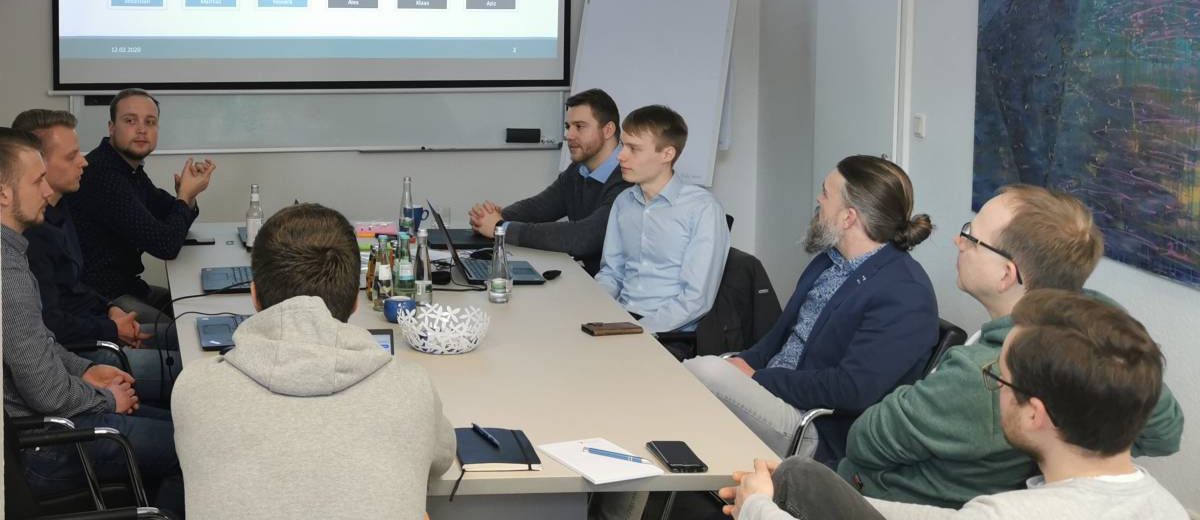Study group from the University of Oldenburg gets feedback from professionals
As part of an in-house presentation, the ROCIT project group presented the prototype of their information platform to the bus operator Thomas Terfloth and discussed with him the possibilities and potential of such a solution.
The ROCIT project group (“Real-time forecasts Optimization Concerning timetable Information of public Transport”) at the University of Oldenburg has been working since September 2019 on developing an information management system to optimize real-time forecasts for public transport. The goal is to document aspects such as punctuality, safety, and reliability of buses so that bus operators can make decisions based on the collected data to keep public transport future-proof. With the help of the information platform, data such as scheduled and actual times, traffic jams and accidents, driver behavior, and weather conditions can be collected to support bus operators in their daily decisions. For example, the system is intended to provide information on which alternative routes are most efficient at different times of day in case of disruptions on the route.
Project group gets feedback from bus operator Thomas Terfloth
After four months of intensive work, the moment arrived in mid-February: five members of the ROCIT project team presented the prototype to bus operator Thomas Terfloth. Terfloth is the project coordinator of the Emsland Süd Transport Association. As a bus operator, he knows exactly where existing software systems reach their limits and what would be desirable from his perspective to make dispatching work easier. In addition, our Managing Director Olaf Clausen, Project Manager Alex Mut, and our sales colleagues Malte Gerber and Dirk Klingberg were also present. As seasoned professionals in the industry, they know what bus operators want — but also how far developments in this area have already progressed on the market. Thomas Terfloth was impressed and provided the group with valuable suggestions for additional features that could be of interest to bus operators. These included data collection of bus mileage based on GPS data, as well as the ability to manually enter reasons for delays directly into the system.


